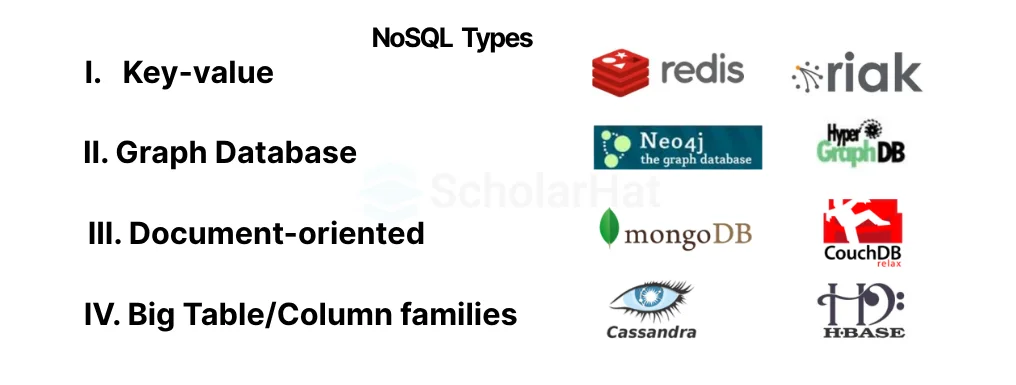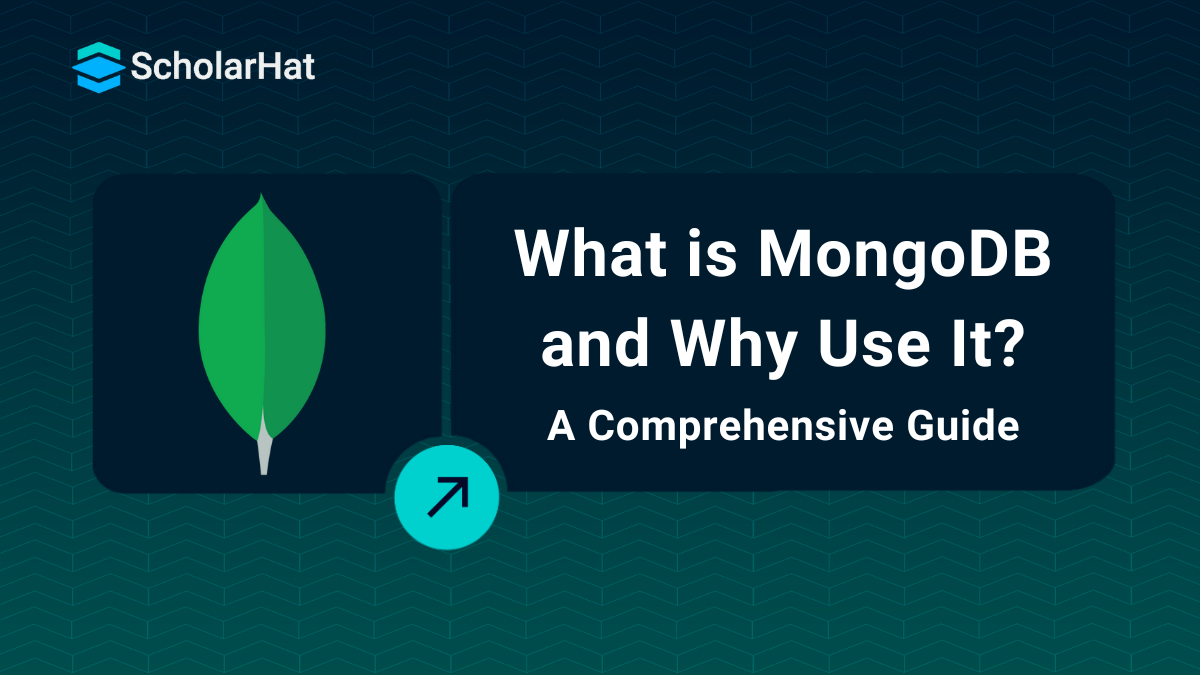What is MongoDB and Why to use it?
In the world of the database, the most common and well popular database systems are RDBMS (Relational Database Management Systems). Now, if we want to develop an application which deals with a large volume of data, then we need to choose one such database which always provides a high – performance data storage solutions. So that, we can achieve the performance in the solution in terms of the data store and data retrieval with accuracy, speed and reliability. Now, if we categorized the database solutions then there are mainly two types of database category available i.e. RDBMS or Relational Database like SQL Server, Oracle etc. and another type is NoSQL database like MongoDB, CosmosDB etc.

The NoSQL database are actually being an alternative of conventional SQL Database and also, this type of database provides mostly all types of features which are normally available in the RDBMS systems. Now-a-days, NoSQL databases become much popular in comparison to the past due to the simple design, provision for both horizontal and vertical scaling and also for easy and simple control over the stored data. This type of database basically breaks the normal tradition of data storage structure of the relational database. It gives the provision to the developers to store data in the database as per the actual requirement of their program. This type of facility we can’t achieve by using the traditional RDBMS database.
If you're interested in learning more, many platforms now offer a MongoDB Certification Free, helping learners validate their skills in this evolving technology.
| Also, Read - MongoDB Interview Questions and Answers |
NoSQL Types
NoSQL databases can be categorized into four different types as given below:

Out of these four types, document database is most popular and widely used database in today’s world. This type of databases always designed on the basis of document-oriented approach to store data. This type of databases always acts an important role to aggregate the data from the documents and also represents the data in a very easy and searchable or organized form. MongoDB is the most commonly used database in the development industry as a Document database. In document databases, the basic concept of table and row in compare with SQL database has been changed. Here row has been replaced by the term document which is much more flexible and model-based data structure. We can store hierarchical data in a single document in document database. Actually, document database always supports semi-structured data model. In document database. Table has been replaced by the term Collection which is a container of multiple same structured or different structured documents.
What is MongoDB?
MongoDB is one of the most popular open-source NoSQL databases written in C++. As of February 2015, MongoDB is the fourth most popular database management system. It was developed by a company 10gen which is now known as MongoDB Inc.
MongoDB is a document-oriented database which stores data in JSON-like documents with dynamic schema. It means you can store your records without worrying about the data structure such as the number of fields or types of fields to store values. MongoDB documents are similar to JSON objects.

Version History
MongoDB is a document-based database which is developed in the C++ programming languages. The word Mongo is basically derived from Humongous. MongoDB was first developed by a New York-based organization named 10gen in the year of 2007. Later 10gen changed the name and known as MongoDB Inc as of today. At the beginning, MongoDB is basically developed as a PAAS (Platform as a Service) database. But, in the year 2009, it was introduced as an open source database as named MongoDB 1.0. The below diagram demonstrates the release history of MongoDB to date. MongoDB 4.0 is the current stable version which is released in February, 2018.

Who is Using MongoDB?
In today’s IT industry, there are large number of companies who are using MongoDB as a database service for the applications or data storage systems. As per the survey made by Siftery on MongoDB, there are around 4000+ company confirmed that they are using MongoDB as Database. Some of the key names are :
Castlight Health
IBM
Citrix
Twitter
T-Mobile
Zendesk
Sony
BrightRoll
Foursquare
HTC
InVision
Intercom etc.
How MongoDB Stores Data?
As you know, RDMS stores data in tables format and uses structured query language (SQL) to query database. RDBMS also has pre-defined database schema based on the requirements and a set of rules to define the relationships between fields in tables.

But MongoDB stores data in documents in-spite of tables. You can change the structure of records (which is called as documents in MongoDB) simply by adding new fields or deleting existing ones. This ability of MongoDB help you to represent hierarchical relationships, to store arrays, and other more complex structures easily. MongoDB provides high performance, high availability, easy scalability and out-of-the-box replication and auto-sharding.
Why and Where you should use Mongo DB?
Since, MongoDB is a NoSQL database, so we need to understand when and why we need to use this type of database in the real-life applications. Since in normal circumstances, MongoDB always preferred by the developers or project managers when our main concern is the deal with large volume of data with a high performance. If we want to insert thousands of records in a second, then MongoDB is the best choice for that. Also, horizontal scaling (adding new columns) is not so easy process in any RDBMS systems. But in case of MongoDB, it is very much easy since it is a schema less database. Also, this type of work can be directly handled by the application automatically. There is no need to any type of administrative work for perform any type of horizontal scaling in the MongoDB. MongoDB is good for the below types of situations :
E-Commerce type of product-based applications
Blog and Content Management systems
High Speed logging, caching etc in the Real time
Need to maintain location wise Geospatial data
For maintains data related to the Social and Networking types
If application is a loosely coupled mechanism – means design may change at any point of time.
MongoDB Advantages
Since, MongoDB is not only database which can perform only CRUD (Create, Read, Update & Delete) operations with the data. Except these, MongoDB also contains so many important features due which MongoDB become the most popular database in the NoSQL category. Some of the important features are :
MongoDB is a Schema less document type database.
MongoDB support field, range based query, regular expression or regex etc for searching the data from the stored data.
MongoDB is very easy to scale up or down.
MongoDB basically uses internal memory for storing the working temporary datasets for which it is much faster.
MongoDB support primary and secondary index on any fields.
MongoDB supports replication of database.
We can perform load balancing in the MongoDB by using Sharding. It scales the database horizontally by using Sharding.
MongoDB can be used as a file storage system which is known as a GridFS.
MongoDB provides the different ways to perform aggregation operations on the data like aggregation pipeline, map reduce or single objective aggregation commands.
MongoDB can store any type of file which can be any size without effecting our stack
MongoDB basically use JavaScript objects in place of procedure.
MongoDB support special collection type like TTL (Time-To-Live) for data storage which expire at a certain time
The dynamic database schema used in MongoDB is called the BSON
Platform And Language Support
Like other RDBMS systems, MongoDB also provides official support for a large number of programming languages and frameworks. Mongo Drivers are available for the following popular languages and Frameworks:
C
C++
C# and .NET
Java
Node.js
Perl
PHP, PHP Libraries, Frameworks, and Tools.
Python
Ruby
Mongoid (Ruby ODM)
Comparison Between SqlDB Schema And MongoDB Schema
Since if we are not so much familiar with the MongoDB database systems and we mainly aware about the RDBMS systems then below tables represents the simply terminology wise translations from SQL DB to MongoDB Schema.
MongoDB Limitations
Since, in the above section, we discuss mainly about the advantages about the MongoDB. But inspite of these benefits, MongoDB also has some limitations like :
Since MongoDB is not as strong ACID (Atomic, Consistency, Isolation & Durability) as compare to the most RDBMS systems.
It can’t handle complex transactions
In MongoDB, there is not provision for Stored Procedure or functions or trigger so there are no chances to implement any business logic in the database level which can be done in any RBMS systems.
Summary
In this article, we will discuss about the basic concept of No SQL Database. Also, we discuss about the MongoDB, version history of MongoDB, Advantages of MongoDB and a comparison of different terminology between MongoDB and SQL based databases.
Additionally, if you're just getting started, you can take advantage of a MongoDB Free Course available online, which offers foundational knowledge to kickstart your journey.
Take our Mongodb skill challenge to evaluate yourself!

In less than 5 minutes, with our skill challenge, you can identify your knowledge gaps and strengths in a given skill.




